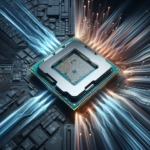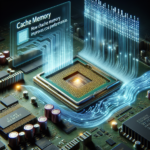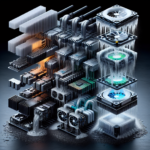How Overclocking Affects CPU Performance and Longevity

Introduction
Overclocking is a popular practice among computer enthusiasts and gamers who seek to push their hardware beyond the manufacturer’s specifications to achieve better performance. While overclocking can provide significant performance gains, it also comes with potential risks and drawbacks. This article delves into how overclocking affects CPU performance and longevity, providing a comprehensive overview of the benefits, risks, and best practices associated with this practice.
What is Overclocking?
Overclocking refers to the process of increasing the clock speed of a computer’s central processing unit (CPU) beyond its factory-set limits. The clock speed, measured in gigahertz (GHz), determines how many cycles per second the CPU can execute. By increasing this speed, users can enhance the performance of their systems, making them faster and more responsive.
How Overclocking Works
Overclocking involves adjusting the CPU’s multiplier and voltage settings in the system’s BIOS or UEFI firmware. The multiplier determines the CPU’s clock speed by multiplying the base clock (BCLK) frequency. For example, if the base clock is 100 MHz and the multiplier is set to 40, the CPU will run at 4.0 GHz. Increasing the multiplier or the base clock frequency can boost the CPU’s performance.
Types of Overclocking
- Manual Overclocking: This involves manually adjusting the CPU’s settings in the BIOS or UEFI. It requires a good understanding of the hardware and its limitations.
- Automatic Overclocking: Some motherboards come with built-in overclocking features that automatically adjust the CPU settings for optimal performance.
- Software Overclocking: Various software tools allow users to overclock their CPUs from within the operating system, providing a more user-friendly interface.
Benefits of Overclocking
Overclocking can provide several advantages, particularly for users who demand high performance from their systems.
Improved Performance
The most obvious benefit of overclocking is improved performance. By increasing the CPU’s clock speed, users can achieve faster processing times, reduced latency, and smoother multitasking. This is particularly beneficial for resource-intensive applications such as gaming, video editing, and 3D rendering.
Cost-Effective Upgrade
Overclocking can be a cost-effective way to extend the life of an older CPU. Instead of purchasing a new processor, users can squeeze more performance out of their existing hardware, potentially delaying the need for an expensive upgrade.
Enhanced Gaming Experience
Gamers often overclock their CPUs to achieve higher frame rates and smoother gameplay. This can make a significant difference in competitive gaming, where every millisecond counts.
Risks and Drawbacks of Overclocking
While overclocking can provide substantial performance gains, it also comes with several risks and potential drawbacks that users should be aware of.
Increased Heat Output
One of the primary risks of overclocking is increased heat output. As the CPU’s clock speed and voltage are increased, it generates more heat. Without adequate cooling, this can lead to thermal throttling, where the CPU reduces its speed to prevent overheating, negating the benefits of overclocking.
Reduced Longevity
Overclocking can reduce the lifespan of a CPU. The increased voltage and heat can cause wear and tear on the processor’s components, potentially leading to premature failure. While modern CPUs are designed to handle some level of overclocking, pushing them too far can significantly shorten their lifespan.
System Instability
Overclocking can lead to system instability, causing crashes, freezes, and data corruption. Finding the right balance between performance and stability often requires extensive testing and tweaking, which can be time-consuming and frustrating.
Voided Warranty
Many CPU manufacturers do not cover damage caused by overclocking under their warranties. This means that if the CPU fails due to overclocking, the user may be responsible for the cost of a replacement.
Best Practices for Safe Overclocking
To minimize the risks associated with overclocking, users should follow several best practices to ensure a safe and stable overclock.
Invest in Quality Cooling
Effective cooling is essential for safe overclocking. Users should invest in high-quality air or liquid cooling solutions to keep their CPU temperatures within safe limits. Additionally, ensuring good airflow within the case can help dissipate heat more effectively.
Gradual Increases
Overclocking should be done gradually, with small increments in clock speed and voltage. This allows users to test the stability of their system at each step and identify the maximum safe overclock for their CPU.
Monitor Temperatures
Monitoring CPU temperatures is crucial when overclocking. Users should use software tools to keep an eye on their CPU’s temperature and ensure it stays within safe limits. If temperatures rise too high, users should reduce the overclock or improve their cooling solution.
Stress Testing
After making any changes to the CPU’s settings, users should perform stress tests to ensure system stability. Tools like Prime95, AIDA64, and IntelBurnTest can help identify any issues with the overclock and ensure the system can handle sustained loads without crashing.
Understand the Limits
Every CPU has its limits, and not all processors are capable of achieving the same overclock. Users should research their specific CPU model to understand its potential and avoid pushing it beyond its safe limits.
FAQ
Is overclocking safe for my CPU?
Overclocking can be safe if done correctly and with proper cooling. However, it always carries some risk, including increased heat output, reduced longevity, and potential system instability. Following best practices can help mitigate these risks.
How much performance gain can I expect from overclocking?
The performance gain from overclocking varies depending on the CPU model and the extent of the overclock. In some cases, users can achieve a 10-20% increase in performance, while others may see more modest gains. The actual improvement will depend on the specific workload and applications used.
Will overclocking void my CPU warranty?
Many CPU manufacturers do not cover damage caused by overclocking under their warranties. Users should check their CPU’s warranty terms before attempting to overclock. Some manufacturers, like Intel with their Performance Tuning Protection Plan, offer additional coverage for overclocking-related damage.
Do I need special hardware to overclock my CPU?
While overclocking can be done on many standard CPUs and motherboards, certain hardware features can make the process easier and safer. Look for motherboards with robust power delivery systems, high-quality VRMs, and good cooling solutions. Additionally, investing in a high-quality CPU cooler is essential for managing increased heat output.
Can overclocking damage other components in my system?
Overclocking primarily affects the CPU, but it can also impact other components, such as the motherboard and power supply. Increased power consumption and heat output can strain these components, potentially leading to instability or failure. Ensuring adequate cooling and using high-quality components can help mitigate these risks.
Conclusion
Overclocking can provide significant performance gains for users willing to invest the time and effort to do it safely. By understanding the benefits and risks, and following best practices, users can achieve a stable and efficient overclock that enhances their system’s performance. However, it’s essential to recognize that overclocking always carries some level of risk, and users should be prepared for the potential consequences, including reduced CPU longevity and voided warranties. Ultimately, the decision to overclock should be based on a careful consideration of the potential benefits and drawbacks, as well as a thorough understanding of the specific hardware involved.




